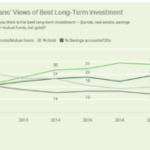ETF Stripping is the latest financial innovation coming out of Wall Street – but not as a retail investor vehicle. Evidently, insider trading schemes have continued to evolve in efforts to evade scrutiny to the latest point of absurdity. In an ETF stripping scheme, when an investor, hedge fund or trader acquires insider information, in order to still (illegally) profit from this insider knowledge, rather than the traditional method of just buying huge blocks of shares or out of the money call options, which have both resulted in untold prosecutions and fines, now, the method would be to buy shares of an ETF holding the target company, and then short all the remaining shares held in the ETF to give a synthetic long position of the target company.
To date, there have been no formal announcements from the SEC of prosecutions or settlements related to the proactive, but they recently announced they’re “investigating the practice”. So, that means that either someone’s about to be charged, or they’re trying to get ahead of the curve and put the word out that nobody should try this thinking they can continue to fly under the RADAR. I suspect there was some sort of anonymous tip or the practice has become widespread enough that the SEC felt the need to publicize the new scrutiny the practice will draw.
ETF Stripping Example
As absurd and costly as this may sound, for large investors and funds with the economy of scale, the practice actually seems to be quite employable. Let’s say for instance, an insider at Apple (AAPL) passes on some insider information about a completely unexpected new product innovation or blow-out sales numbers that exceed even the most optimistic analyst recommendations. At least check, Apple comprised 20% of the popular Nasdaq ETF (QQQQ). The top ten holdings of the ETF are 47% of the total. So, one could reasonably go long Apple shares and short probably 50 stocks and hit a pretty representative synthetic long Apple position if they wanted to cut corners a little. In this example, once the major Apple announcement occurred, while the QQQQ might move marginally due to the 20% weighting of Apple, undoubtedly, Apple will have rallied in contrast to the rest of the index, so the short positions could be closed alongside the QQQQ long position and said trader will have had their insider trade completed. Perhaps a quick 1 week return of 10% with borrowed money for a leveraged 20% weekly return or more. Given the right volume, trading costs would be negligible.
There are numerous ETFs popping up practically daily, and some of them are very focused with few holdings. Imagine the bonanza for the likes of a Rare Earth Metals ETF in advance of a leak out of China about more export restrictions on critical metals for US military and telecommunications needs, or imagine the pop within a biotech ETF just before new study results or FDA rulings are announced – sometimes an entire ETF gains double digits in a day when an issue jumps over 100%. There are clear opportunities to exploit market participants with insider knowledge; so the question is how pervasive is it and can it even be stopped?
Is ETF Stripping Even Able to be Proven?
This is one of those questions where if you have to ask yourself if it’s wrong, it’s probably wrong. But by law, would this practice actually be illegal – and could intent be proven beyond a reasonable doubt? It’s an interesting question. After all, what about a hedge fund with hundreds of long and short positions opening and closing simultaneously. How could one reasonably “prove” that they were specifically stripping the ETF for a particular stock? What if they did as I stated above and only stripped out certain issues without stripping out the entire index? How could they prove intent? Is this really just a market arbitrage strategy or a Black Swan event as opposed to insider trading on an individual stock issue? Couldn’t one just claim they were value investing rather than insider trading? These would all be rather complex issues to consider in a prosecution. Perhaps that’s why the SEC wants to get out ahead of it and put the word out that they will be forming procedures and rules around the practice – before everyone’s doing it.
What Are Your Thoughts?
Inventive? Ingenious? Illegal?
Disclosure: Long AAPL, no position in QQQQ and not an “ETF Stripper”.











{ 0 comments… add one now }
{ 3 trackbacks }